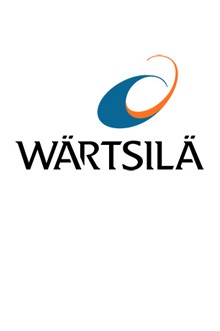

Article original published by Ship Technology on February 23, 2021.
The current pace and intensity of regulatory change for shipping has never been greater. Owners face the overwhelming challenge of having to comply with current environmental regulations and those likely to emerge in the future.
Wärtsilä Exhaust Treatment director Sigurd Jenssen explains how shipping must embrace future-proofed technology solutions to tackle many of shipping’s key sustainability issues.
With the shipping industry up against growing environmental pressure from shippers, consumers and investors – and not to mention regulators – our sector now faces an acute need to cut air pollution and make real progress towards decarbonisation.
- Sigurd Jenssen
Collectively, we already have a recent good track record in this area. 2020 marked the beginning of our journey to meeting more complex environmental regulatory compliance designed to tackle key pollutants emitted by shipping operations. The 0.5% global sulphur cap, which came into force just over a year ago, was an important first step.
The benefits of the regulation are clear: if the industry had not implemented the 0.5% sulphur limit and started reducing its sulphur oxide (SOx) emissions, air pollution from ships would have contributed to more than 570,000 additional premature deaths worldwide in the next five years, not to mention increasing the risk of acid rain, harming already delicate ecosystems.
The success of this regulation, and the response from owners and operators to its limits, has led to speculation that the International Maritime Organization (IMO) will enforce more stringent rules in the years to come around other pollutants. This is not to mention the greenhouse gas reduction targets for 2030 and 2050, which will require widespread technological innovation.
The financial case for scrubbers
In the case of scrubbers, all signs indicate that they are a sensible investment in today’s increasingly complex emissions landscape. According to forecasts from Wood Mackenzie, scrubber uptake could rise to generate 20% of total marine fuel demand in the EU by 2025, rising from a forecast of 14% in 2020.
As the fuel price spread widens, and is expected to continue rising, exhaust gas abatement technology is becoming more favourable. The financial case for scrubbers is unchanging, as the alternative would be to switch to other more expensive fuels.
The case for these solutions improves if we also change our mindset and think of them not as solutions to a single problem, but as a platform for future innovation to tackle impending emissions challenges.
Although not widely understood to date, the potential for the best scrubbers on the market to be upgraded over time is an area worth examining in an era when a pragmatic approach to costs and capital investment is needed.
Instead of just being a compliance deadline, we believe that 2020 marked the beginning of exhaust gas abatement technology’s evolutionary journey. The technology as we know it is constantly evolving and can help solve both present challenges and emerging ones.
Today, scrubbers can be implemented as a technology platform that has the ability to be built upon, thereby positively impacting return on investment, improving the flexibility of the solution.

Taking a ‘modular approach’
There is every likelihood that more stringent rules that further limit SOx, nitrogen oxides (NOx), particulate matter (PM) and black carbon will come into force. This is why it is key that the industry adopts a new way of thinking about scrubbers beyond SOx to solve these future challenges.
Thus a ‘modular approach’ – the ability to add or remove components to a scrubber from a technological perspective – provides an immense amount of assurance that an investment made today will continue to make sense in a decade’s time.
This moves in the direction that we can see the rest of the industry moving when it comes to integrating technology with vessel design.
The potential for totally integrated propulsion chains – spanning engine, scrubber and clean technologies to drive cumulatively improved results – is a core way that the industry is going to be able to decarbonise. More importantly, this is achievable for some vessels on a retrofit basis, if they target their investments properly.
In terms of the future innovations that could be developed for scrubbers, every avenue is worth exploring. At Wärtsilä, we are developing upgrades that could tackle PM imminently, as well as improved wash-water cleaning.
The ability to combine scrubbers with exhaust gas recirculation in order to meet NOx Tier III levels, has been demonstrated and is also a meaningful area for the sector to explore.
Looking to the future
This positive future for scrubbers doesn’t provide us with a shortcut to meeting the industry’s regulatory targets. Scrubbers are one important piece in the puzzle if quality and longevity are pursued now.
As is all too common with hardware investments in shipping, a seemingly low-cost choice today for reducing emissions will only incur hidden costs, such as downtime, maintenance and repairs, in the future.
For many, scrubbers represent a solution to a single problem: compliance with the 2020 sulphur cap. But the true power of exhaust gas abatement technology is its ability to eradicate air pollutants while safeguarding assets.
By adopting a modular approach, continuous research and development, and prioritising innovation, we will continue to supply the industry with assured lifecycle solutions that will safeguard assets into the future and generate real progress on sustainability targets.
